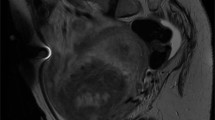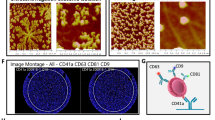Abstract
Immobilization and subsequent sacral decubitus or pressure sore formation is a danger faced by the paraplegic. We report on 4 patients treated with non-healing pressure sores. Three male patients had decubiti eroding into the posterior urethra and bladder neck area. One female patient had bladder neck and urethral loss secondary to Foley catheter erosion and a sacral pressure sore. All 4 had non-healing decubiti secondary to urinary contamination and, in addition, gross fecal contamination in the male patients. All patients failed previous muscular flaps and urinary diversion per suprapubic tube.
In the male patients, suprapubic continent urinary diversion included bladder neck mobilization, closure of the distal urethra by oversewing and patching with bovine dura, and augmentation of the bladder with a Miami pouch. Fecal diversion was provided with a sigmoid colostomy. In the female patient, continent diversion was performed by forming a Miami pouch. Total diversion allowed healing of the pressure sores and provided a simpler method of personal hygiene. Details of the diversion and case studies will be presented.
Similar content being viewed by others
Log in or create a free account to read this content
Gain free access to this article, as well as selected content from this journal and more on nature.com
or
References
Reuler J B, Cooney T G (1981) The pressure sore: pathophysiology and principles of management. Ann Intern Med 94: 661–666.
Sather M R, Weber C E, George J (1977) Pressure sores and the spinal cord injury patient. Drug Intell Clin Pharm 11: 154–169.
El-Toraei I, Chung B (1977) The management of pressure sores. J Dermatol Surg Oncol 3: 507–511.
Bejany D E, Politano V A (1988) Stapled and nonstapled distal ileum for construction of a continent colonic urinary reservoir. J Urol 140: 491–494.
Bejany D E, Suarez G, Penalver M, Politano V A (1989) Nontunneled ureterolonic anastomosis: an alternate to the tunneled implantation. J Urol 142: 961–963.
Penalver M, Bejany D E, Averette H, Donato D, Sevin B, Suarez G (1989) Continent urinary diversion in gynecological oncology. Gynecol Oncol 34: 274–288.
Vasconez L O, Schneider W J, Durkiewicz M J (1977) Pressure sores. Curr Prob Surg 14(4): 1–62.
Galpin J E, Chow A W, Bayer A S, Guze L B (1986) Sepsis associated with decubitus ulcers. Am J Med 61: 346–350.
Hebel J R, Warren J W (1990) The use of urethral, condom and supra-pubic catheters in aged nursing home patients. J Am Geriatr Soc 38: 777–784.
Warren J W, Damron D, Tenney J H, Hoopes J M, Deforge B, Muncie H L (1987) Fever, bacteremia and death as complications of bacteriuria in women with long-term urethral catheters. J Inf Dis 155(6): 1151–1158.
Hulecki S J, Hackler R H (1984) Closure of the bladder neck in spinal cord injury patients with urethral sphincteric incompetence and irreparable urethral pathological conditions. J Urol 131: 111–112.
Webster G D, Bertram R A (1986) Continent catheterizable urinary diversion using the ileocecal segment with stapled intussusception of the ileocecal valve. J Urol 135: 465–469.
Hackler R H (1973) Spinal cord injuries—urologic care. Urology 2(1): 13–18.
Hackler R H (1977) A 25 year prospective mortality study in the spinal cord injured patient: comparison with the long-term living paraplegic. J Urol 117: 486–488.
Comarr A E (1972) Renal complications of the ileal conduit and cutaneous vesicostomy among patients with traumatic cord bladders. J Urol 107: 762–765.
Graham S D (1981) Present urological treatment of spinal cord injury patients. J Urol 126: 1–4.
Hackler R H (1978) When is an ileal conduit indicated in the spinal cord injured patient? Paraplegia 16: 257–262.
O'Donnell W F, Taylor R (1980) Genitourinary problems of spinal cord trauma. Curr Prob Surg 17(4): 216–228.
Donnelly J, Hackler R H, Bunts R C (1972) Present urologic status of the WWII paraplegic: 25-year follow-up. Comparison with status of the 20-year Korean war paraplegic and 5-year Vietnam paraplegic. J Urol 108: 558–562.
Schwarz G R, Jeffs R D (1975) Ileal conduit urinary diversion in children: computer analysis of followup from 2 to 16 years. J Urol 114: 285–288.
Shapiro S R, Lebowitz R, Colodny A H (1975) Fate of 90 children with ileal conduit urinary diversion a decade later: analysis of complications, pyelography, renal function and bacteriology. J Urol 114: 289–295.
Mitchell M E, Kulb T B, Backes D J (1986) Intestinocystoplasty in combination with clean intermittent catheterization in the management of vesical dysfunction. J Urol 136: 288–291.
Bejany D E, Lockhart J L, Rhamy R K (1986) Malignant vesical tumors following spinal cord injury. J Urol 138: 1390–1392.
Author information
Authors and Affiliations
Rights and permissions
About this article
Cite this article
Bejany, D., Chao, R., Perito, P. et al. Continent urinary diversion and diverting colostomy in the therapy of non-healing pressure sores in paraplegic patients. Spinal Cord 31, 242–248 (1993). https://doi.org/10.1038/sc.1993.43
Issue date:
DOI: https://doi.org/10.1038/sc.1993.43
Keywords
This article is cited by
-
An Overview of Sacral Decubitus Ulcer
Current Trauma Reports (2018)
-
Aquatic-Based Therapy in Spinal Cord Injury Rehabilitation: Effective Yet Underutilized
Current Physical Medicine and Rehabilitation Reports (2017)



